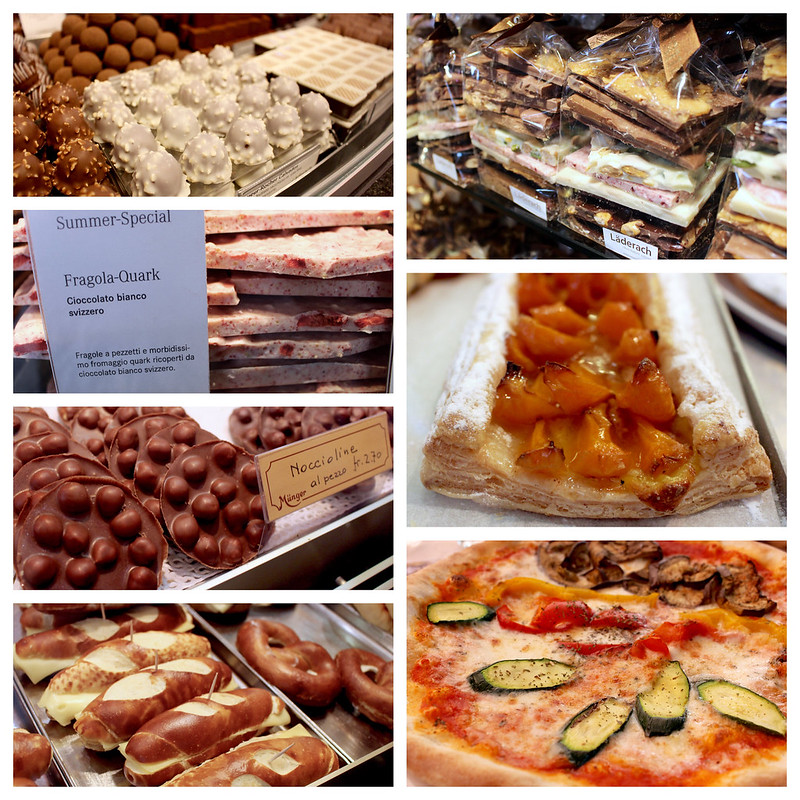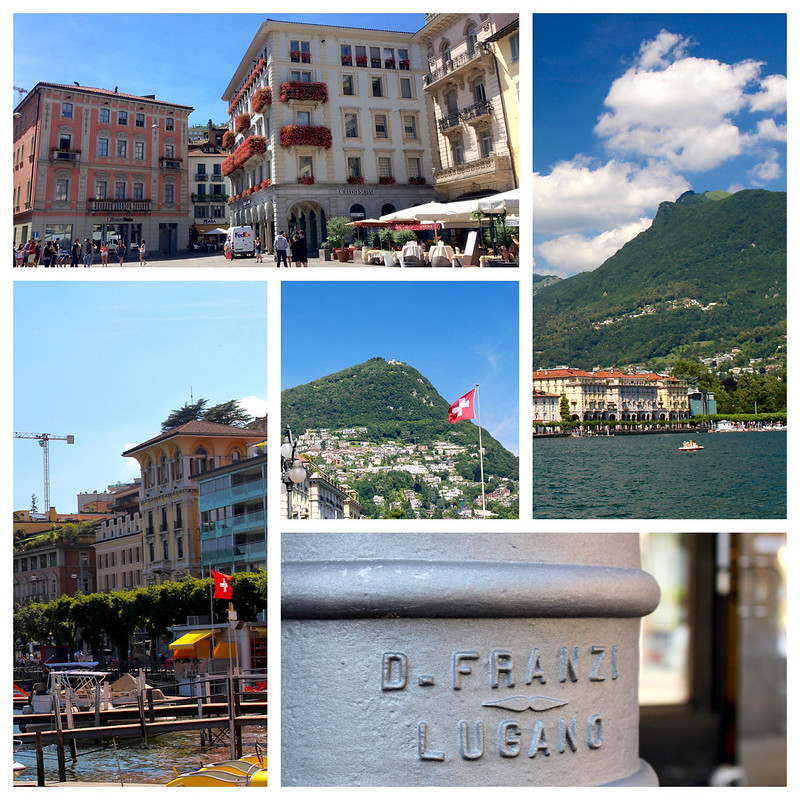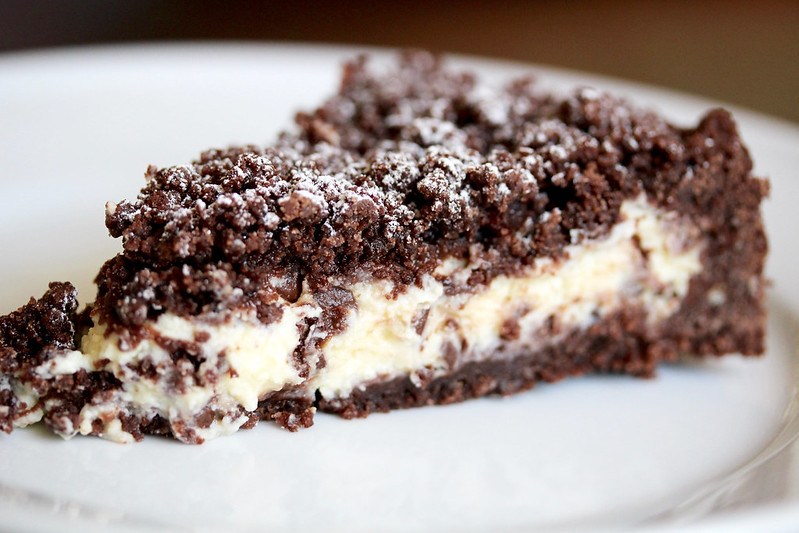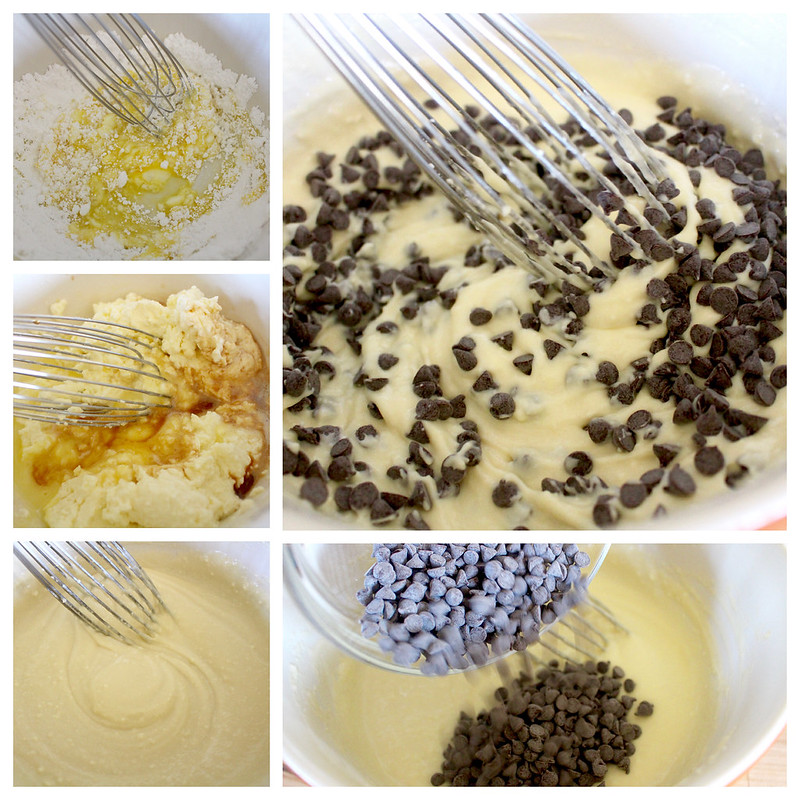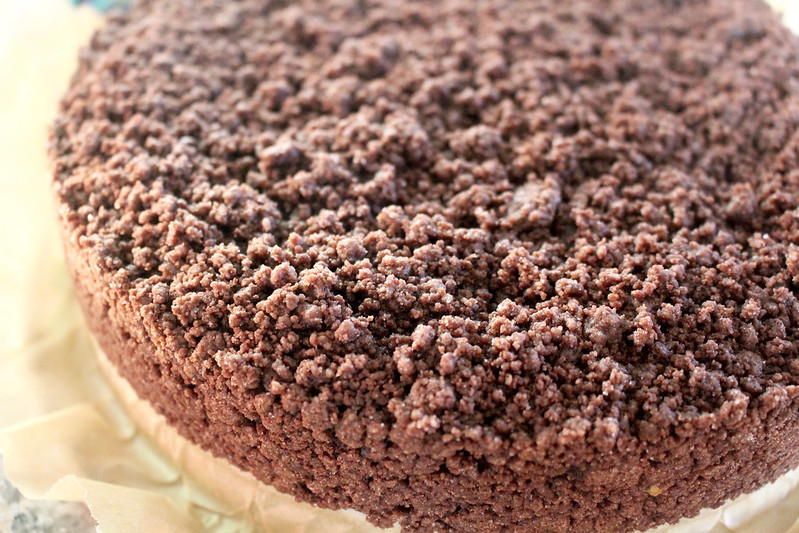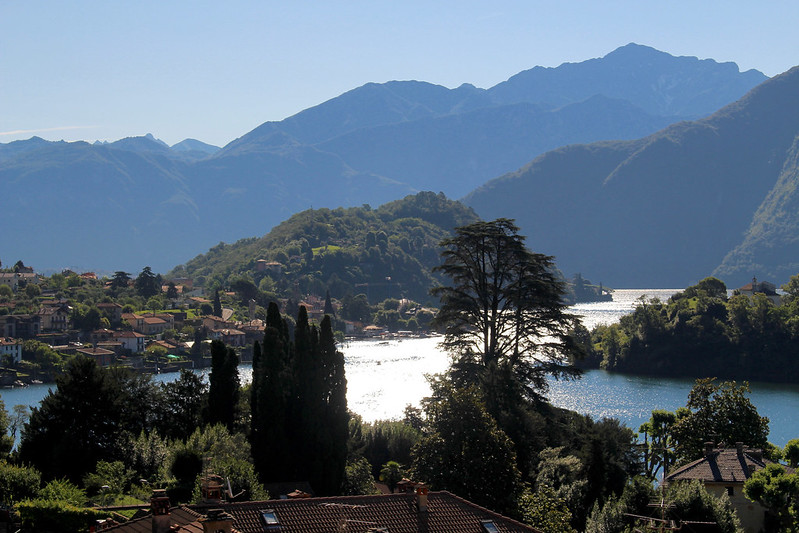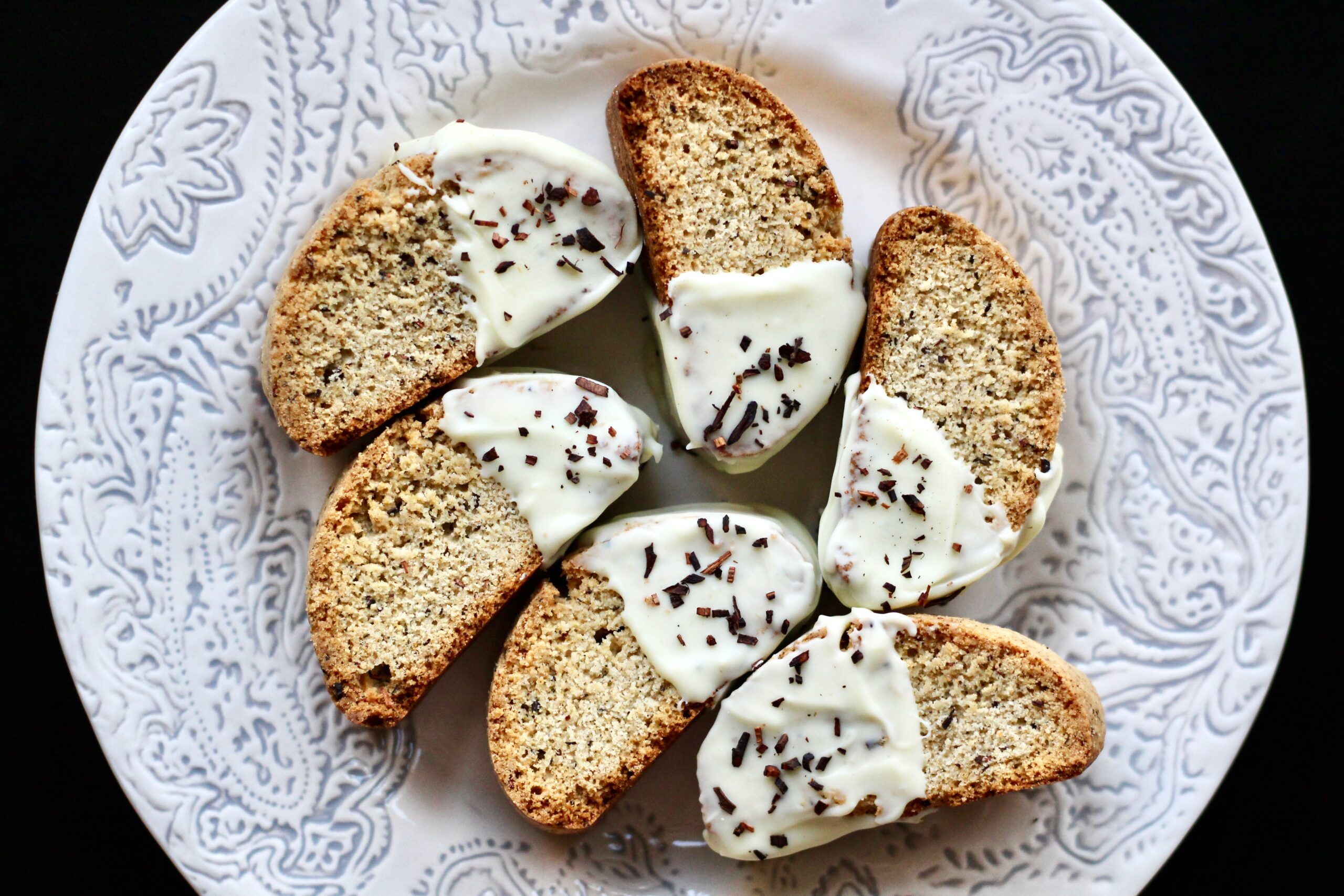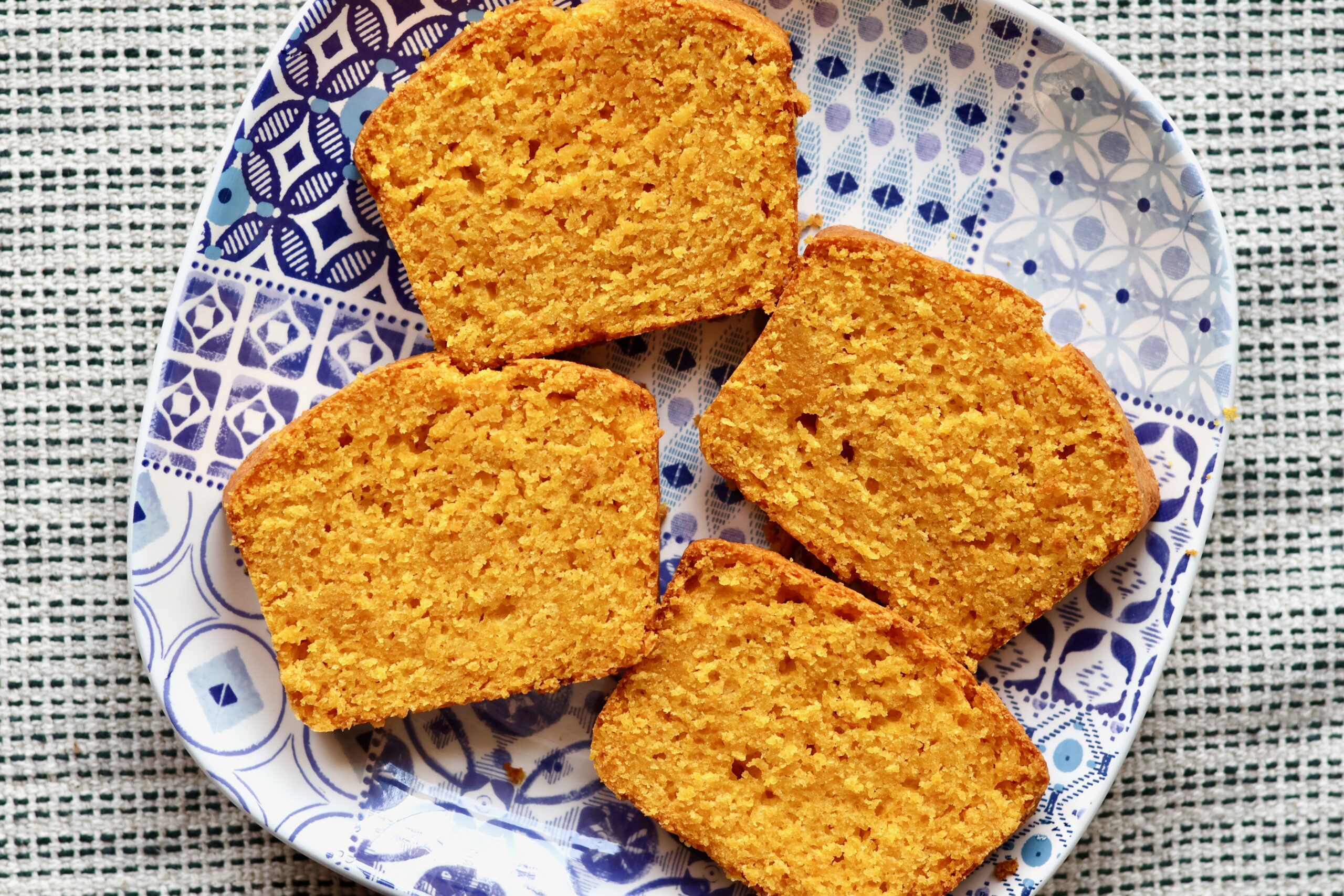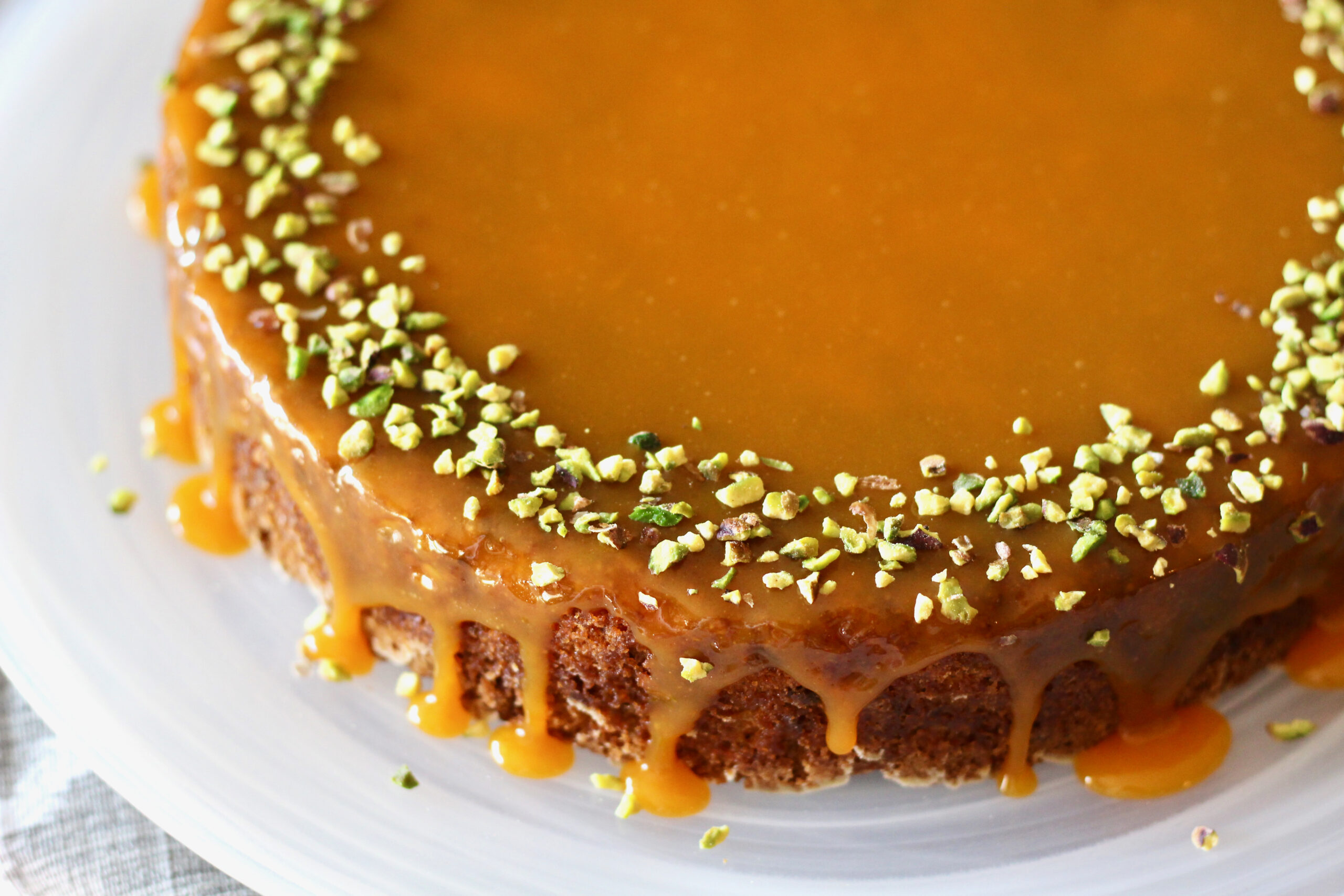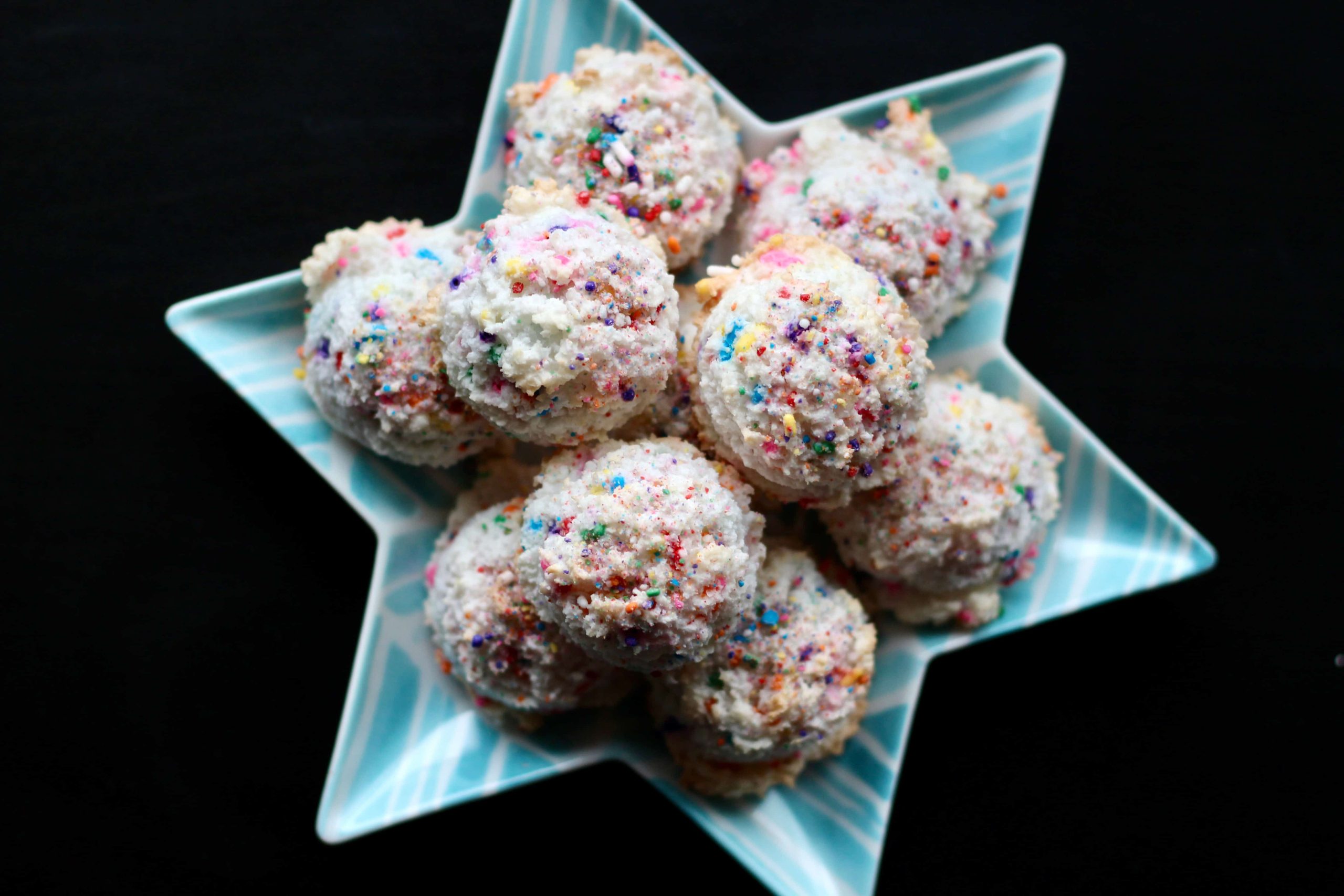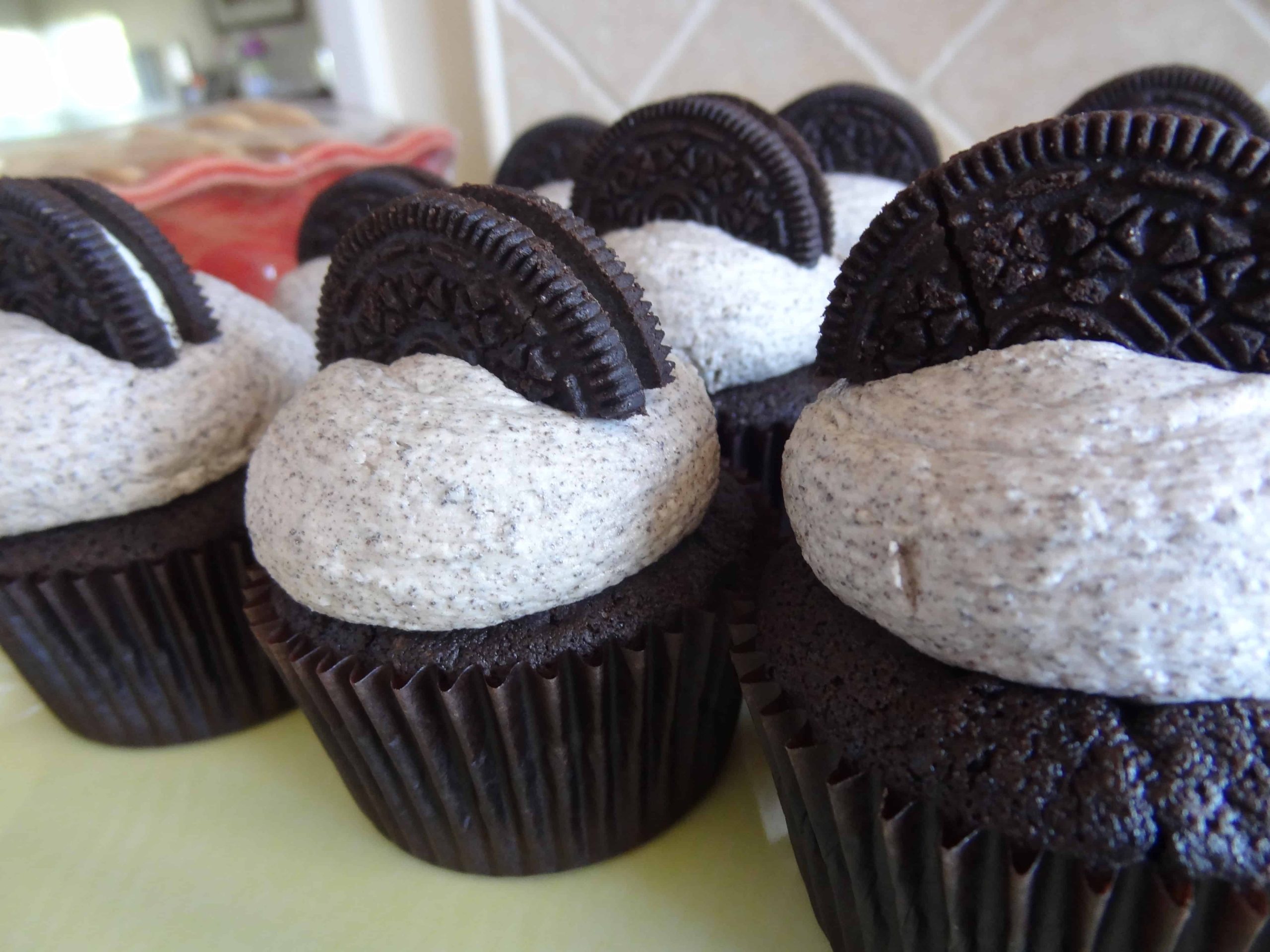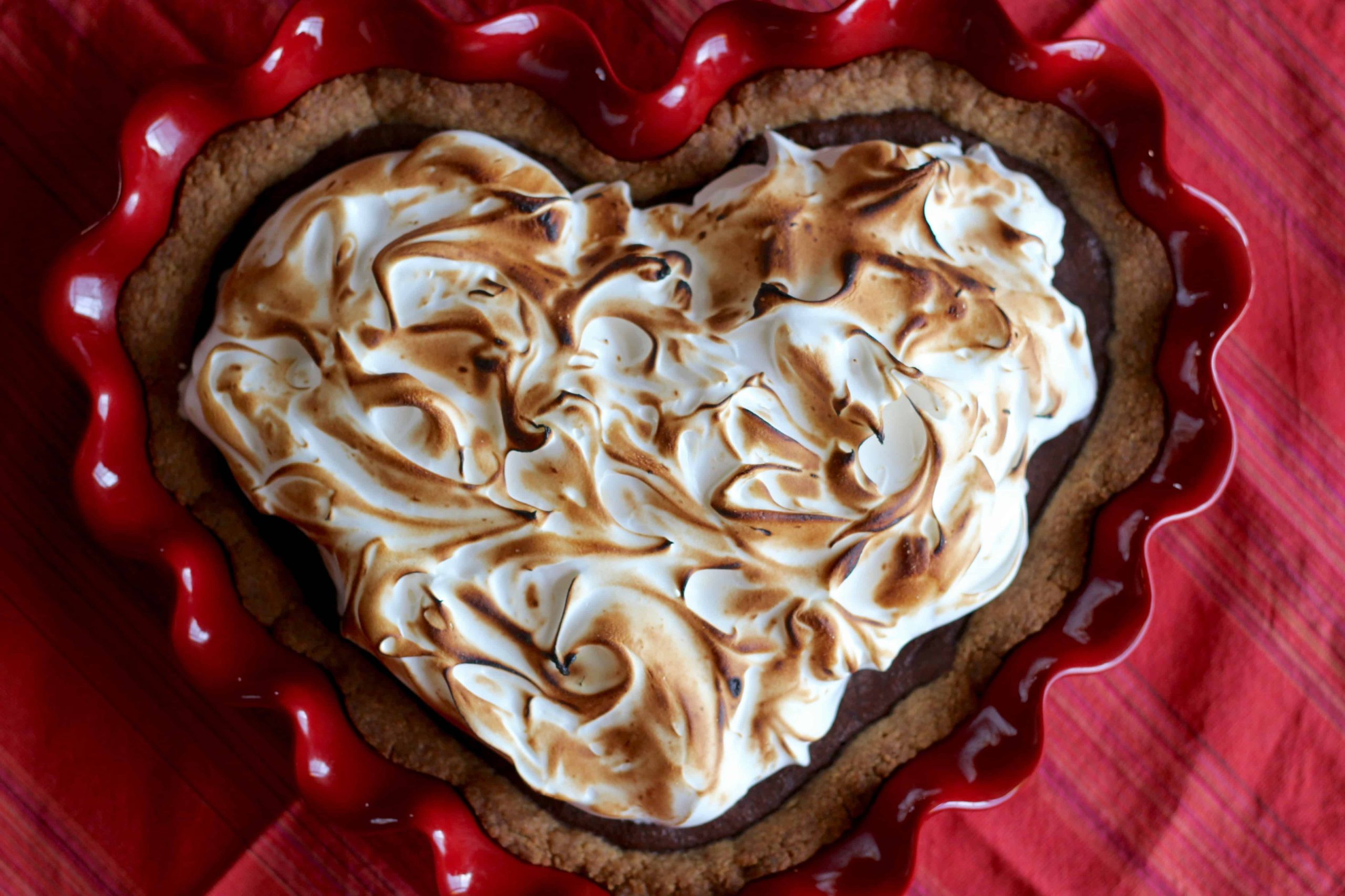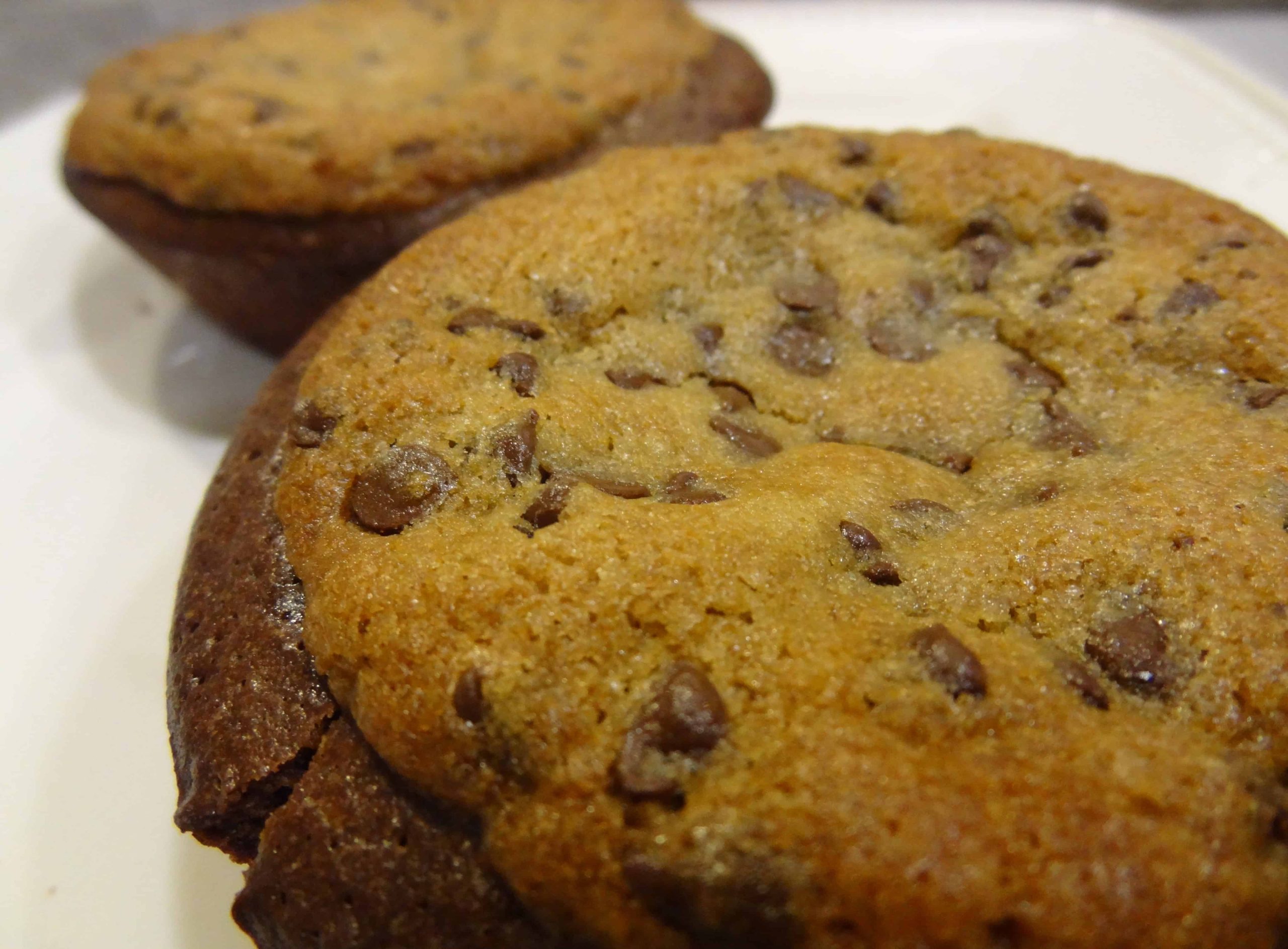
Last year I waxed poetic about a cake from northern Italy that I had discovered called torta sbriciolata (sbree-cho-LAH-tah), which consists of a crumbly base and top layer sandwiching a creamy or fruity filling. And I was all, “This cake is amazing!” and “This cake is so easy!” and “I’m going to post so many flavors of this cake!” And do you know how many I’ve posted since that original one? That’s right: zip, zero, nada, niente. Not because I didn’t want to, but because I always get caught up in seasonal recipes and rarely have time to go back to other projects that are still simmering in the back of my mind. But since I’m finally (finally!) writing my series on Italian desserts, I was inspired to return to this amazing, easy, and many-flavored cake. I decided to start the series by featuring the northernmost region that I have visited: Lombardia, home of torta sbriciolata. This area includes the lakes of Como, Garda, and Maggiore, encompassing a beautiful mountainous terrain that borders the south of Switzerland. Northern Lombardia is dotted with picturesque towns that cling around narrow, meandering roads, breathtaking whether you’re there in the summer or winter. I spent a few days on Lake Como at the end of my honeymoon in 2014, and it proved to be an ideal place to decompress from 3 weeks of frenetic sightseeing. We stayed in a tiny town called Sala Comacina, where the most exciting thing to do was observe the lake under ever-changing weather conditions.
The zigzagging road along Lake Como winds through quaint towns and villages teeming with gelato shops, sottopassagi (hidden passageways), and rambling cobblestones. Around every corner were dazzling flower pots, curious Italian kittycats, age-old stone buildings, grapevines tumbling down terraces… In exploring their nooks and crannies, I kept asking myself, “Is this real life?” What a haven for those who live or spend regular time there! It conjured nostalgia for glamorous old Italian films and summers spent lingering at the water’s edge… not that I’ve ever actually experienced either of those, but that’s what I imagine they would be like. *sigh*
By the by, we tried to find George Clooney’s villa in the town of Laglio– I think we identified the property, but security lockdown was in full effect. 😉 I can certainly see why he chose this place as an escape from Hollywood… We did, however, visit Villa del Balbianello, the resplendent lakeside estate featured in Star Wars, Episode II: Attack of the Clones where Anakin Skywalker and Padmé Amidala secretly got married. Manicured gardens, stone scroll banisters, sparkling chandeliers, and sweeping lake views… You could serve the serenity on a platter.
One more thing– Lake Como is not far from the charming town of Lugano in the Italian-speaking south of Switzerland. While it’s not technically in Italy, it feels very Italian… I like to say it’s what Italy could be if it got its shit together. (Of course I say this with a heart full of love for Italy– read more here about the totally-worth-it frustrations of traveling in Italy.) Lugano is set on an idyllic blue lake, its buildings bedecked by flower boxes that burst with vivid blooms, and its piazzas bordered by tidy, old-world buildings. I was delighted to find that the many bakeries and restaurants offer a unique Swiss-Italian twist on pastries and pizza.
One place in particular stood out to me, which was Läderach Chocolatier Suisse. I unsuspectingly wandered into this shop that featured slabs resembling chocolate bark in their window, not yet aware that I was about to purchase one of the most delicious morsels I’ve ever eaten, and I later mourned the fact that I only bought one little piece. They make a product called frischschokolade, or “fresh chocolate” in Swiss German, which are chocolate shards with mix-ins and toppings including fruit, nuts, spices, and candies. What I bought was a strawberry-quark cioccolato bianco (white chocolate) piece, a creamy, fruity, bright confection unlike anything I’d had before. Sadly, they don’t have locations outside Switzerland, Korea, and the Middle East, but I still dream about this small piece of heaven. And not for nothing, Lugano pastries hold their own too.
Being there was such a trip because everything looked very Swiss– high-end jewelry shops, Swiss army knives in store windows, and the square-shaped red Swiss flag waving over the boats in the harbor. And yet, the melodic sound of Italian met my ears everywhere I went. If you visit Lombardia, it is well worth a day trip to Lugano if you get the chance!
But back to food, because isn’t that where things always end up? Lombardia is one of the few places that the restaurants were a bit disappointing, plus we had a kitchenette in our rented flat, so we didn’t get out to eat much. I think we simply weren’t in a great culinary spot in Sala Comacina, but I’m sure there are places to get great food nearby, especially given the recognition of cuisine in cities like Brescia, Bergamo, and Mantova. The one thing I do remember is the ginormous bruschetta (the length of my forearm) that I was surprised to receive at a restaurant in the town of Como…
This wasn’t necessarily a regional specialty though– more of an amusing novelty. Whereas in the other regions that we visited on the trip, we got a very good sense of the local cuisine, I walked away from Lombardia without much of an understanding of what the locals nosh on (though from reading stuff online, it sounds like it includes a lot of risotto, polenta, stuffed pastas, and sausage– sign me up).
A year later, an Italian friend happened to tell me about torta sbriciolata, and of course I immediately headed to the interwebs to see what this crumble-cake situation was all about. Now that I know about it, I would most certainly search high and low for it the next time I visit Lombardia.
As we’ve established, torta sbriciolata is a crumb cake enclosing a creamy or fruity filling; this might be ricotta, nutella, chopped fresh fruit, or so many other things. You can also spice the crumb mixture with different flavors, or chocolatize it like this. It is one of my all-time favorite Italian desserts, homemade or otherwise. Not only that, Torta Sbriciolata with Cocoa, Ricotta, & Chocolate Chips is my favorite version so far. It’s not too sweet or too rich, so even people who don’t eat much dessert (who are these people??) may enjoy a morsel. I especially love the contrast in flavor and texture– it’s chocolaty and creamy, and the crumbs stay crisp.
P.S. If anyone who’s traveled to Lombardia can recommend a place to get a nice slice of torta sbriciolata next time I’m there, pretty please leave me a comment below– I shall be eternally grateful! 🙂
This is the 2nd installment of my series on Italian regional desserts. Start here for an intro to Italian regional cuisine, my experiences traveling in Italy, and information about Italian pantry items for baking. Next up is the Mediterranean paradise of the Amalfi Coast.
Torta Sbriciolata with Cocoa, Ricotta, & Chocolate Chips
Inspired by Kika Kitchen
Yields 1 9″ round cake
The original recipe is from an Italian blog, and they use weight rather than volume measurements in Europe. I recommend using a scale if you have one, as I’ve estimated the volume measurements as closely as possible, but I made the cake using weighed ingredients.
Check out the first piece of this blog series for information about Italian ingredients, including the Type “00” flour, Paneangeli baking leavener, and vanillina powder used here.
For the crumbs:
- 370 grams (a touch over 3 cups) Italian “Type 00” flour
- 30 grams (about ⅓ cup) dark cocoa powder, such as Valrhona
- 2½ teaspoon (8 grams) Italian Paneangeli baking leavener
- 150 grams (¾ cup) granulated sugar
- 1 envelope (3 grams) Italian vanillina powder
- ¼ teaspoon kosher salt
- 100 grams cold unsalted butter (about 7 tablespoons), cut into small pieces
- 2 cold eggs, lightly beaten
For the filling:
- 100 grams (¾ cup + 2 tablespoons) confectioners’ sugar
- 1 large egg
- 1 teaspoon pure vanilla extract
- 400 grams fresh ricotta cheese (1¾ cups), drained in a fine-mesh strainer overnight
- 100 grams (½ cup + 1 tablespoon) semisweet chocolate chips, mini chips, or chopped chocolate
Make the cocoa dough crumbs:
Place the flour in a large mixing bowl and sift the cocoa powder and Paneangeli (leavener) over it. Add the sugar, vanillina powder, and salt, and whisk all the dry ingredients until completely blended.
Add the beaten eggs and butter pieces. Work the wet ingredients in with a wooden spoon, then switch to using your hands in order to rub in the butter pieces gently until all of the flour/cocoa mixture has been absorbed. The mixture should be crumbly with some larger chunks; you are not looking for a uniform dough here. Chill the crumbs for 1-2 hours in the fridge.
Preheat an oven to 350°F with a rack positioned in the center. Line the bottom of a 9″ springform pan with parchment paper– I simply lay a piece over the base before clamping the ring shut over it. Lightly grease the sides of the pan.
Make the ricotta filling:
Whisk the egg with the confectioners’ sugar and vanilla in a medium bowl until smooth. Add the ricotta and whisk vigorously until almost no lumps remain. Stir in the chocolate chips.
Assemble the torta:
Retrieve the chocolate crumbs from the fridge. Pour half of them into the prepared springform pan and spread them into an even layer, making sure there are no empty spots on the bottom of the pan. Very gently compact the crumbs with your fingers just to help them adhere. Do not press them into a dense, uniform layer; they should still look very crumbly.
Mound the chocolate chip-ricotta cream in the center of the pan over the crumbs. Spread the filling evenly out to the edges with a small offset spatula, leaving a ½” border gap all the way around the pan. It’s important for the filling to be in a flat layer to avoid it poking through the top crumb layer.
Carefully add the rest of chocolate crumbs to the pan, first filling in the gap between the ricotta cream and the pan edge; press them down gently to create a compacted “wall” that will corral all of the cream filling. Cover the top with the rest of the crumbs and press them gently to adhere.
Bake the torta sbriciolata for approximate 30 minutes. It’s a bit difficult to tell when it’s done because the cream filling will betray your cake tester. The top crumbs will puff up slightly and feel crisp, and the edges will feel firmly set.
Set the springform pan over a wire cooling rack and let the cake cool in the pan completely. Chill the cake for several hours to firm it up. (Trying to unmold it early while it’s still soft will result in a cake “earthquake”– trust me, I did it so you don’t have to…)
Sprinkle the top of the cake with confectioners’ sugar shortly before serving. The torta can be stored in an airtight container in the refrigerator for up to 3 days.
© Dafna Adler & Stellina Sweets, 2017.
SaveSave
SaveSave








